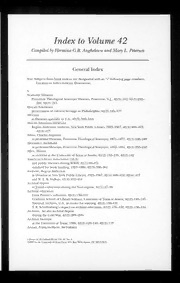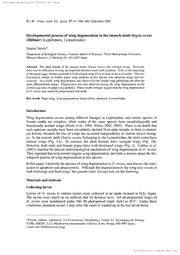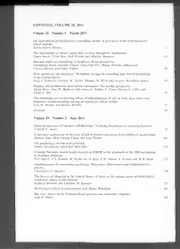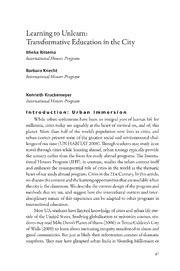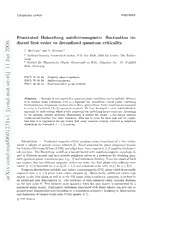
Frustrated Heisenberg antiferromagnets: fluctuation induced first order vs deconfined quantum criticality PDF
Preview Frustrated Heisenberg antiferromagnets: fluctuation induced first order vs deconfined quantum criticality
Europhysics Letters PREPRINT Frustrated Heisenberg antiferromagnets: fluctuation in- 6 duced first order vs deconfined quantum criticality 0 0 2 F. Kru¨ger1 and S. Scheidl2 n 1 Instituut-Lorentz, Universiteit Leiden, P.O. Box 9506, 2300 RA Leiden, The Nether- a lands J 2 Institut fu¨r Theoretische Physik, Universita¨t zu Ko¨ln, Zu¨lpicher Str. 77, D-50937 1 Ko¨ln, Germany 1 ] l e PACS.75.30.Kz – Magnetic phase boundaries. r- PACS.75.50.Ee – Antiferromagnetics. t PACS.05.10.Cc – Renormalization group methods. s . t a m d- Abstract. – Recentlyitwasarguedthatquantumphasetransitionscanberadicallydifferent n from classical phase transitions with as a highlight the ’deconfined critical points’ exhibiting o fractionalizationofquantumnumbersduetoBerryphaseeffects. Suchtransitionsaresupposed c tooccur in frustrated (’J1-J2’) quantummagnets. Wehavedeveloped anovelrenormalization [ approachforsuchsystemswhichisfullyrespectingtheunderlyinglatticestructure. According to our findings, another profound phenomenon is around the corner: a fluctuation induced 1 v (order-out-of-disorder) first order transition. This has to occur for large spin and we conjec- 1 ture that it is responsible for the weakly first order behavior recently observed in numerical 3 simulations for frustrated S =1/2 systems. 2 1 0 6 0 Introduction. – Frustrated magnets exhibit quantum phase transitions of a rich variety / t a which is subject of intense current research [1]. Novel scenarios for phase transitions beyond m the Landau-Ginzburg-Wilson(LGW)paradigmhavebeensuggested[2,3]jogglingfundamen- - tal concepts. The Heisenberg model on a square lattice with antiferromagnetic couplings J1 d and J between nearest and next-nearest neighbors serves as a prototype for studying mag- 2 n neticquantum-phasetransitions(see,e.g.,[4]andreferencestherein). Fromtheclassicallimit o one expects that two different magnetic orders can exist: the N´eel phase with ordering wave c v: vector (π,π) is favorable for α≡J2/J1 <1/2 and columnar order with (0,π) for α>1/2. Quantumfluctuationscertainlymayinduceaparamagnetic(PM)phasewhichisnaturally i X expected near α 1/2 where both orders compete [5]. Remarkably, additional orders may ≈ r appear in the N´eelphase as wellas in the PMphase when translationsymmetry is brokenby a an additional spin dimerization [4]. The existence of such enhanced order crucially depends on the spin value S. This becomes most apparent when the spin system is represented by a nonlinear-sigma model. Topological excitations associated with Berry phases can give rise to ground-state degeneracies correspondingto a translation-symmetry breaking by dimerization and formation of valence-bond solid (VBS) phases [6,7]. (cid:13)c EDPSciences 2 EUROPHYSICSLETTERS The N´eel-VBS transition has been argued to be in a novel quantum criticality class that does not fit in the standard LGW paradigm. Intriguing data on this transition was obtained in simulations of the S = 1/2 quantum XY model frustrated by ring exchange [8,9]. The transition was interpreted as a second-order one; this possibility was predicted by the theory of the deconfined critical point and suggested to be generic for a variety of experimentally relevant two-dimensional antiferromagnets [3]. However, in a more careful finite-size analysis ofthe XYcaseitwasdemonstratedthatthe N´eel-VBSpointrepresentsananomalouslyweak first-order transition [10]. Field-theoretical approaches of various kinds have been developed, based on the 1/S [11] orthe1/N expansion[12,13]. Thelatterapproachisabletocapturesomeoftheessenceofthe topologicalaspects on a mean-field level. However,it is the former approach,elaboratedto a renormalization-groupanalysis, which predominantly has served as basis for a comparison of critical aspects between theory and experiment (see e.g. [14]). Nevertheless, this approach so far has suffered from two intrinsic shortcomings: i) Spin- wave interactions are the physical mechanism underlying the renormalization flow. On one- looplevel,the flow equations describe correctionsto the physicalparametersofrelative order 1/S. These corrections have been worked out using a continuum version of the nonlinear σ model (CNLσM) as a starting point [11]. However, for the original lattice model, this is not systematic, since corrections of the same order are dropped under the naive coarse graining of the lattice model onto the CNLσM. As a consequence, important effects such as a renormalization of the spin-wave velocity and the frustration α are missed. ii) Similarly, theouterlargemomentumregionofthemagneticBrillouinzone(BZ)isonlycrudelytreated. This entails a significant uncertainty in the computation of the phase diagram. In this Letter, we lift these shortcomings by developing a renormalization analysis which fullyaccountsforthelatticestructure. Itcombinesthesystematictreatmentofallcorrections in order 1/S on the level of the conventional first-order spin-wave theory (SWT) with the meritsofarenormalizationapproach,whichgoesbeyondanyfiniteorderin1/S byaninfinite iteration of differential steps, successively eliminating the spin-wave modes of highest energy. As a result, we obtain an improved description of the phase transitions. In particular, the possibility of a fluctuation induced first-order transition which is not accessible on the level of the CNLσM is included in a natural way. Spin-coherent state representation. – The key to what follows is a novel kind of path integral quantization, which makes it possible for us to treat the effects of umklapp on an equal footing with the spi-wave interactions. To be specific, we stick to the aforementioned J -J Heisenbergmodelonasquarelattice. WeaddressthestabilityoftheN´eelphaseagainst 1 2 quantumfluctuationscontrolledbyS andα. Fluctuationsaretreatedinacoherentspinstate path-integral representation of the model, where a spin state corresponds to a unit vector ~n. In the absence of fluctuations, spins would assume the states ~n = ~e = S, S on A/B z | i |± i | ± i the two sublattice A andB. From the standardTrotter formula emerges an imaginarytime τ (discretized in intervals of duration ∆τ) and an action of the form [1] ~n Hˆ ~n ′ = ln ~n ~n′ + ∆τh{ }| |{ }i (1) S − h{ }|{ }i ~n ~n Xτ Xτ h{ }|{ ′}i taking ~n at time τ and ~n at τ ∆τ. For weak quantum fluctuations, the components of ′ − n perpendicular to the magnetization axis are small and may be considered as expansion x,y parameters (as in [11]). However, attempting to directly apply this expansion to the lattice model we encountered time ordering difficulties in the action [15]. F. Kru¨ger and S. Scheidl: Frustrated Heisenberg antiferromagnets... 3 Instead,westartformastereographicparametrizationofcoherentstates,onsublattice A, ~n = (1+a¯a/2S) Sexp(aSˆ /√2S)S,S where a is the stereographic projection of ~n from − | i − | i the unit sphere onto the complex plane, a = tan(θ/2)exp(iφ) with the standard spherical angles θ and φ. The action can be expressed in terms of the stereographic coordinates using the matrix elements [16] ~nSˆ ~n 1 a¯a/2S ~nSˆ ~n √2S a z ′ ′ + ′ ′ h | | i =S − , h | | i = (2) ~n~n 1+a¯a/2S ~n~n 1+a¯a/2S h | ′i ′ h | ′i ′ Here a¯ is the complex conjugate of a. The expressions for the coordinate b on sublattice B are given by the correspondences Sˆ Sˆ and Sˆ Sˆ Sˆ Sˆ for a b. z z x y →− ± ≡ ± → ∓ → Theexplicitexpressionoftheactionintermsofaandbistoolengthytobegivenhere. To leading order in 1/S,the fluctuations are controlledby the bilinear part of the actionthat 0 S represents free magnons. We also retain the quartic contribution to the action, which int S represents magnoninteractionsand containthe renormalizationofsingle-magnonparameters of relative order 1/S. Higher order contributions to the action are neglected. Terms from the functional Jacobian are also negligible on this level. The single-magnon contribution to the action can be parameterized in the form 1 = [a¯ ∆a ∆a¯ a +¯b ∆b ∆¯b b ] S0 Z {2g k k− k ′k k k− k ′k Xτ k +∆τS[Γ+k(a¯ka′k+¯bkb′k)+Γ−k(a¯k¯bk+a′kb′k)]}, (3) using the Fourier transform a(r) = eikra , the intgeral = 2 d2k over the magnetic k · k k (2π)2 BcoZs(|kkx)|]+a|nkdy|J≤+π=,an2dJt[hceose(xkch+ankge)Rc+oucpolisn(gksΓ+kk≡)]J.k+F−oJr0+Rsi+mJp0l−ic,iRΓty−kt≡heJlk−at≡tic2eJc1o[cnosst(aknxt)+is y k 2 x y x − y consideredasunitlength. The dimensionlessparameterg representsthe strengthofquantum fluctuations. Itassumesthevalueg =1intheunrenormalizedmodelandturnsouttoincrease under renormalization. Diagonalizing this bilinear action, one easily obtains the magnon dispersion E =Sg Γ+ k | k| apct1e−rizγek2d, bwyhearne γiskot=roΓpi−kc/dΓi+ksp.eFrsoironαE≤(k1)/2=, thceklo+w-Oen(ekr2g)ywspitihn-waasvpeine-xwciatvaetiovnesloacirteychca=r- | | √8gSJ √1 2α. Likewise,the exchangecouplingsgeneratea spinstiffness ρ=S2J (1 2α) 1 1 for low-ener−gy modes. One also obtains the propagators φ¯ φ = gG and φ¯ φ− = φ¯ φ =g(G +1)forfieldsfromthesamesublattice(φ=a,bh),kan′kdi a b =k a¯ ¯b h =k kigF h ′k ki k h k ki h k ki − k for fields from different sublattices. In the latter case the correlators are unchanged by a replacement φ¯ φ¯. We have defined G = (n + 1/2)(1 γ2) 1/2 1/2 and F = → ′ k k − k − − k (n +1/2)γ (1 γ2) 1/2 where n = (eβEk 1) 1 is the bosonic occupation number. For k k − k − k − − strong frustration (α > 1/2) the stiffness becomes negative and the spin-wave velocity is ill defined due to the presence of unstable modes in the center of the BZ (see Fig. 1). Renormalization approach. – Starting from this action with bilinear and quartic terms, weimplementarenormalizationprocedureasfollows. Insuccessivesteps,themodesofhighest energy (an infinitesimal fraction of all modes) are integrated out. This decimation of modes yieldsaneffectivetheoryforthe remainingmodesandgivesrisetodifferentialflowequations. Asflowparameterwechoosel= 1ln(A /A ),whereA =2π2 istheareaoftheoriginal 2 BZ RBZ BZ BZ, and A is the area of the residual BZ (RBZ) populated by the remaining modes. On RBZ largelengthscalesin the N´eelphase,the RBZ becomescircularandl is the usuallogarithmic length scale. The evolution of the RBZ and the single-magnon dispersion is illustrated in Fig. 1 for various parameters. 4 EUROPHYSICSLETTERS Fig. 1 – Evolution of modes under coarse graining. Each panel corresponds to the area |kx| ≤ π, |ky| ≤ π. Red color represents small, yellow high positive energy. Black lines are lines of constant energy,blueareasrepresentunstablemodes. Panels(a)-(d): IntheN´eelphasetheRBZmaybecome disconnected first, then always shrinks to a sphere (here S = 1/2, α = 0.3, l = 0,0.25,0.5,1.0). Panels (e)-(h): IntheN´eelphasefor strongfrustration α>1/2, initially unstablemodes (bluearea) are renormalized to stable modes and the RBZ eventually also shrinks to a sphere (here S = 1/2, α = 0.55, l = 0,0.11,0.29,1.30). Panels (i)-(k): In the columnar phase, after the elimination of all stable modes, an area of unstable modes survives(here S =2, α=0.6, l=0,0.10,0.20). Toone-looporder,correspondingtoasystematicalcalculationofcorrectionsinorder1/S, the renormalization effects due to spin-wave interactions can be captured by a flow of the single-magnonparameters. The resulting flow equations are given by 1 dg 1 = dG0, (4) − −S g dJ = J (dF 2dG0), (5) 1 1 − S − g dJ = J (dG+ 2dG0), (6) 2 2 S − where the integrals over the differential fraction ∂ of modes of highest energy are defined as dG0 = q∂Gq, dG+ = q∂(Jq+/J0+)Gq, and dF− = q∂(Jq−/J0−)Fq. Since tRhe BZ does noRt remain self-similar underRmode decimation, we omit the usual rescalingoflengthandtimewhichisnecessaryonlyfortheidentificationoffixedpointsunder a renormalization-group flow. However, dropping this rescaling does not lead to a loss of information. Then, each fixed point represents an antiferromagnetically ordered state. The quantum-disorderedphase and the transition into it show up as run-away flow. Resultsand discussion. – BecauseofthechanginggeometryoftheRBZandtheincorpo- rationofthefullsingle-magnondispersioninourrenormalizationapproach,theflowequations can be integrated only numerically. Here, we focus on T = 0, although the flow equations are valid also for T >0. The flow of parameters is characterized by the following tendencies. Both exchange couplings J as well as 1/g always shrink. These fundamental parameters 1,2 F. Kru¨ger and S. Scheidl: Frustrated Heisenberg antiferromagnets... 5 flow in such a way that α always decreases, c2 increases (initially it is negative for α>1/2), while ρ may increase for small l until it decreases for sufficiently large l. The nature ofmagnetic ordercanbe identified fromthe flow behavior. Three possibilities are observed. (i) The RBZ shrinks to a circle of decreasing radius e l [see Fig. 1 panels − ∝ (a)-(d) andpanels (e)-(h)] whileJ andg (as wellas the derivedquantitiesc, ρ,α) converge 1,2 topositivevalues. ThenN´eelorderispresent,characterizedbytheserenormalizedlow-energy parameters. (ii) At some finite l , fluctuations become so strong that g diverges and J ∗ 1,2 vanish. This indicates the loss of magnetic order due to overwhelming quantum fluctuations. Close to the transition to the N´eel phase, the magnetic correlation length – which can be identified with ξ = el∗ – diverges algebraically like ξ (α α ) 1. For S = 1/2 this c − ∼ − asymptotic behavior is shown in one inset of Fig. 2. (iii) For strong frustration, it is also possiblethatafiniteRBZofunstablemodesremainsafterdecimationofallstablemodes(see Fig. 1 panels (i)-(k)). This indicates that the instability towards columnar order is effective for the renormalized low-energy modes. 6 S=1/2 0.1 5 param. 1/Ζφ∗ 1/ξ 4 S Neel 2nd order 0 0.5 ρ 0∗.54 0.58 0.62 0.66 0.7 1/ 3 0.4 S=2 α 2 S=1/2 0.3 ρ∗ 1 S=2 0.2 1/Ζ∗φ 1st ordVerBS??/ 0.1 0.5 0.52 0.54α 0.56 0.58 0.6 col.? 0 0 0.1 0.2 0.3 0.4 0.5 0.6 0.7 α Fig. 2 – Phase diagram showing the 2nd order transition line between the N´eel ordered and the PM phase (dashed line) and the 1st order boundary between the N´eel and the columnar phase (solid line). The border between the PM and the columnar phase (dotted line) is just guesswork and cannot be calculated within our approach. Insets: Nature of the phase transitions. For S = 1/2 ∗ ∗ therenormalized spin stiffness ρ vanishesand thestrengthof thequantumfluctuationsZ diverges φ at the phase boundary corresponding to a 2nd order transition. Close to the the N´eel phase the correlation lengthdivergeslikeξ∼(α−αc)−1. Atthe1stordertransition(S =2)ρ∗ andZφ∗ remain finite. The region of stability of the N´eel phase is illustrated by the light grey region in Fig. 2. In the absence of frustration, we find N´eel order to be stable for 1/S . 5.09 in remarkable agreementwith conventionallinear SWT [5]. However,this is pure coincidencesince inlinear SWTthephaseboundaryisdeterminedbythevanishingofthelocalmagnetizationcalculated inorderS0,whereashereitisdeterminedbythedivergenceofg duetospin-waveinteractions treated in one-loop order. While the phase boundary is located at academically small spin valuesforsmallfrustration,S reachesphysicallymeaningfulvaluesatlargerfrustrationwhere the discrepanciesbetween SWT andourrenormalizationapproachbecome morepronounced. In linear SWT, the phase boundary smoothly approaches 1/S 0 for α 0.5, whereas we ց ր findtheN´eelphasetoreachuptoα=0.66forS =0.68. Forspinssmallerthanthisvalue,the N´eel phase becomes unstable towards a PM phase via a second-order transition, whereas it 6 EUROPHYSICSLETTERS becomes unstable for S >0.68via a firstordertransition. Since we deal with a discontinuous transitionwecanonlyspeculateaboutthetypeoforderingintheadjacentphase(darkshaded regioninFig. 2). Fromthe classicallimitwe expectcolumnarorderforverylargeS whereas for intermediate spin also VBS order may be present. In the region where the N´eel phase reaches up to α > 1/2, initially unstable modes are renormalized to stable ones by spin-wave interactions. Simultaneously, α is renormalized to a value α < 1/2 and the flow behavior (i) is realized. In the columnar phase, the flow of α ∗ saturates at a value α >1/2 and the flow behavior (iii) is observed. ∗ StabilityofN´eelorderforα>0.5sofarhasbeenfoundonlybyaselfconsistentlymodified SWT [17] and Schwinger-boson mean-field theory (SBMFT) [18]. The overall shape of the N´eel phase of these approaches is consistent with our findings. However, in modified SWT and SBMFT the first-order transition from N´eel to columnar order can be obtained only by a comparison of free energies between the two phases. In our theory, the transition directly emerges from the analysis of spin-wave interactions in the N´eel phase. ThenatureofthetransitionsoutoftheN´eelphasebecomesapparentfromthebehaviorof the fluctuations on large length scales (k 0), where φ¯ φ Zφ with Z g c. → h k ′ki ≃ √2k φ ≡ √1 2α ∝ ρ Approaching the transition into the PM phase, the renormalized value Z diverges a−nd gives φ∗ rise to a divergent susceptibility (see Fig. 3). At the same time the renormalized ρ vanishes ∗ while c remains finite. The continuous evolution of Z and ρ indicate the second-order ∗ φ∗ ∗ nature of the transition. Approaching the transition into the columnar phase, one observes a saturation of Z and ρ at finite values as well as a discontinuous jump of α indicating a φ∗ ∗ ∗ first-order transition. Fig. 3 illustrates the dependence of various renormalized quantities on α and 1/S within the N´eel phase. The insets of Fig. 2 show the evolution of ρ , Z and ξ ∗ φ∗ with higher resolution at the transitions. Fig. 3 – Values of the renormalized parameters within the N´eel phase. Color corresponds to the strength of large-scale fluctuations (a), the renormalized spin stiffness (b), the frustration (c), and thespin-wavevelocity (d). Confidence in the reliability of our findings is provided by quantitative comparisons for specific parameter values. Results for Z c /c exist from various approaches. For S =1/2 c∗ ≡ ∗ and α = 0, first-order SWT yields a slight enhancement of spin-wave velocity, ZSWT = c F. Kru¨ger and S. Scheidl: Frustrated Heisenberg antiferromagnets... 7 1.158. We find an increased value Z = 1.20, which is in agreement with Monte Carlo (MC) c∗ simulations (see [19] and references therein). As 1/S and/or α increases, the enhancement factorZ alsoincreases. Atthephaseboundary1/S 5.09forα=0,thedifferenceisalready c∗ ≈ more pronounced: ZSWT = 1.40 and Z = 2.04. For α > 0, unfortunately, MC data for Z c c∗ c are not available at the transition out of the N´eel phase, neither for S = 1/2 nor for larger physical values of S. Conclusion. – We have presented a novel renormalizationapproachfor frustrated quan- tumantiferromagnetswhichfullyaccountsfortheunderlyinglatticegeometryandconsistently captures the renormalization of the single-magnon parameters by spin-wave interactions all over the magnetic BZ. For the J -J model we clearly demonstrated that for large spins and strong frustration, 1 2 fluctuations on lattice and intermediate scales cause an instability of the N´eel phase towards a first order transition. These effects are totally missed by any effective long-wavelength continuum theory obtained by a naive coarse graining of the lattice model. We conjecture that these fluctuations which crucially depend on the underlying lattice geometry and the way of frustrating the N´eel order are responsible for the weakly first order behavior observed recently in numerical simulations for frustrated S =1/2 systems [10]. ∗∗∗ The authors benefited from stimulating discussions with J. Zaanen, J. Betouras and A. Sandvik and thank J. van Wezel for critical reading of the manuscript. This work was sup- ported by Dutch Science Foundation NWO/FOM and by Deutsche Forschungsgemeinschaft SFB 608. REFERENCES [1] S. Sachdev, Quantum Phase Transitions, edited by Cambridge University Press (Cam- bridge, England) 1999. [2] SenthilT., Balents L., SachdevS., Vishwanath A.,andFisherM.P.A,Phys. Rev. B,70 (2004) 144407. [3] Senthil T., Vishwanath A., Balents L., Sachdev S., and Fisher M.P.A, Science, 303 (2004) 1490. [4] Sushkov O.P., Oitmaa J., and Weihong Z., Phys. Rev. B, 63 (2001) 104420. [5] Chandra P. and Doucot B., Phys. Rev. B, 38 (1988) R9335. [6] Haldane F.D.M.,Phys. Rev. Lett, 61 (1988) 1029. [7] Fradkin E. and Stone M., Phys. Rev. B, 38 (1988) R7215. [8] Sandvik A.W., Daul S., Singh R.R.P., and Scalapino D.J., Phys. Rev. Lett., 89 (2002) 247201. [9] Melko R.G., Sandvik A.W., and Scalapino D.J., Phys. Rev. B, 38 (2004) R9335. [10] Kuklov A., Prokof’ev N., and Svistunov B., Phys. Rev. Lett., 93 (2004) 230402. [11] Chakravarty S., Halperin B., and Nelson D.R., Phys. Rev. B, 39 (1989) 2344. [12] Read N. and Sachdev S., Phys. Rev. Lett., 62 (1989) 1694. [13] Read N. and Sachdev S., Phys. Rev. B, 42 (1990) 4568. [14] Hasenfratz P., Eur. Phys. J. B, 13 (2000) 11. [15] Kru¨ger F. and Scheidl S., unpublished. [16] Radcliffe J.M., J. Phys. A, 4(1971) 313. [17] Xu J.H. and Ting C.S.,Phys. Rev. B, 42 (1990) R6861. [18] Mila F., Poilblanc D., and Bruder C.,Phys. Rev. B, 43 (1991) 7891. [19] Manousakis E., Rev. Mod. Phys., 63 (1991) 1.
The list of books you might like

Believe Me

Shatter Me Complete Collection (Shatter Me; Destroy Me; Unravel Me; Fracture Me; Ignite Me)

What Happened to You?

As Good as Dead
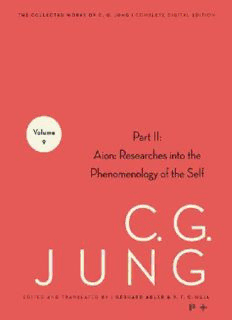
Collected Works of CG Jung

2006 WEAVER HIGH YEARBOOK HARTFORD CT
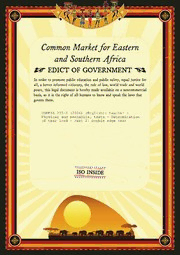
COMESA 235-2: Leather - Physical and mechanical tests - Determination of tear load - Part 2: Double edge tear

Negro zine 2 (2006 Apr)

Premesse a Cassandra

Attitudes, Personality and Behavior (2nd Edition)
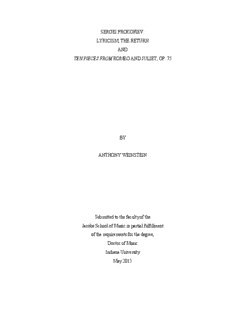
BY ANTHONY WEINSTEIN
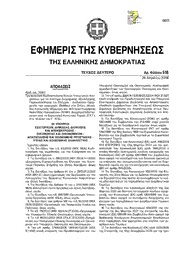
Greek Government Gazette: Part 2, 2006 no. 518
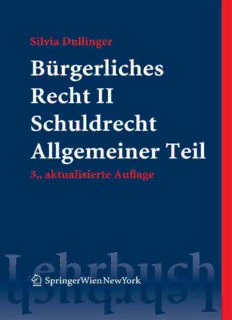
Bürgerliches Recht II. Schuldrecht Allgemeiner Teil, 3. Auflage

2016 / 12 / 21 ولغاية 2016 1 1
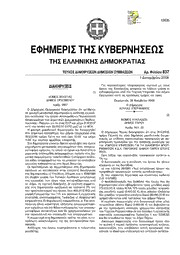
Greek Government Gazette: Part 7, 2006 no. 837
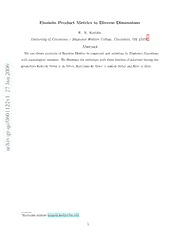
Einstein Product Metrics in Diverse Dimensions
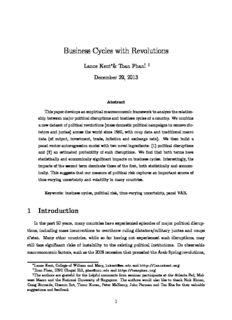
Business Cycles with Revolutions

Tafseer-e-Siddiqi (Volume 1)

